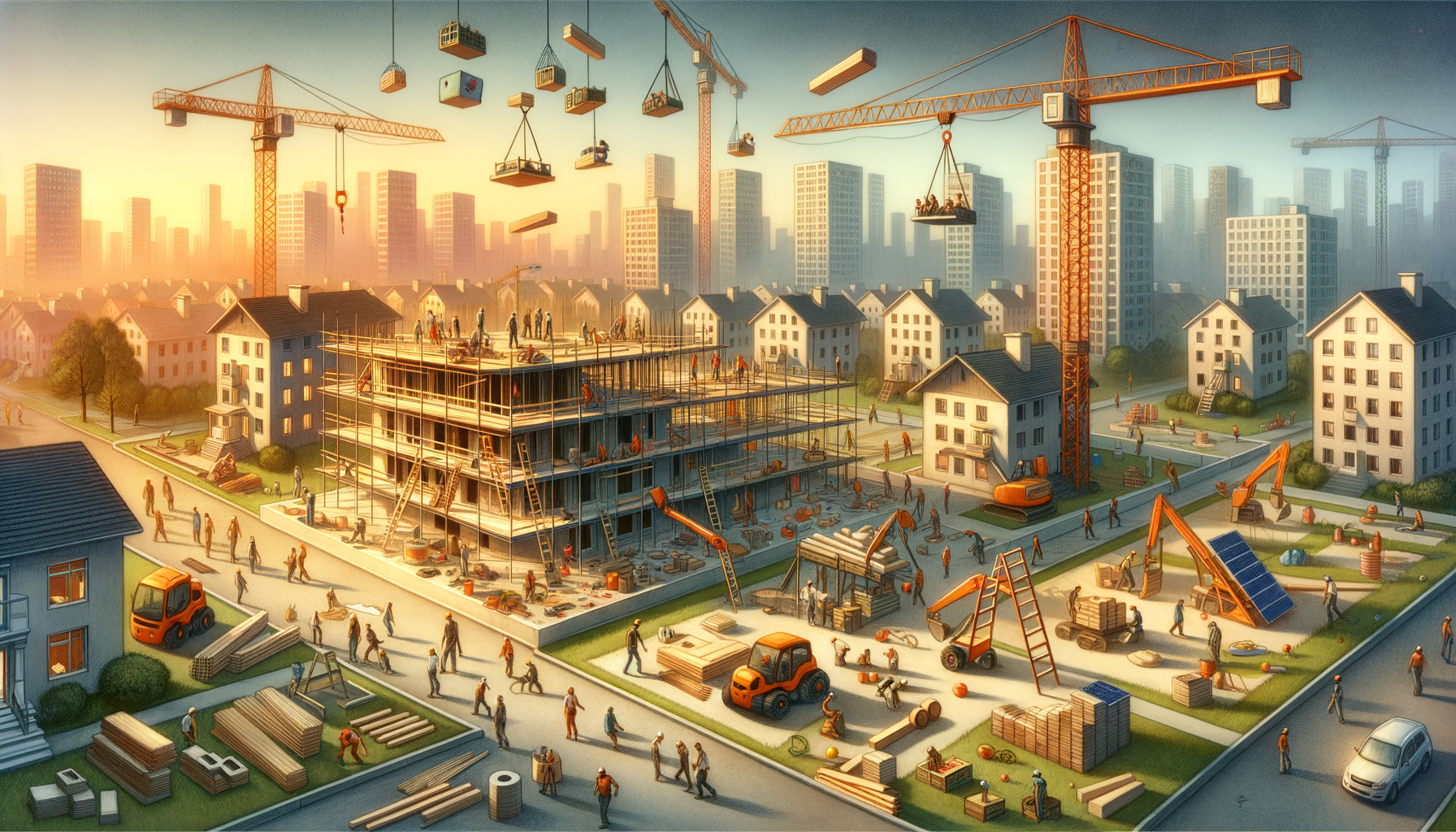“Revamping the Landscape: Unpacking Trends in Residential Construction – 2020 Analysis”
As we navigate through the complexities of the economy and housing market, it’s crucial to focus on a variety of factors that collectively paint a comprehensive picture. Today, let’s explore the latest trends in residential construction, their implications, and the broader economic ramifications, weaving in additional insights that help us understand where we might be headed.
### The Surge in Building Permits and Housing Starts
Recently, there’s been a noticeable increase in the number of building permits issued. This is a vital indicator as it reflects the confidence of developers and the likelihood of future construction activity. A rise in building permits, which precede the start of actual construction, suggests anticipated growth in housing supply, aiming to meet looming demand.
Simultaneously, we’ve observed a significant uptick in housing starts. This term refers to the commencement of construction on new residential buildings. When these figures go up, they not only signal robust builder confidence but also suggest more job opportunities in construction, potentially echoing positive vibes through the employment sector.
### Examining Construction Delays and Material Costs
Despite the promising increase in permits and starts, the construction sector is facing several challenges that could hinder the smooth progression of projects. Delays have become a conspicuous thorn in the side for many developers. These are often tied to two major factors: labor shortages and material costs.
**Labor Shortage:** The construction industry has been grappling with a chronic shortage of skilled labor. This is not a new problem but has been accentuated by increasing demand for new homes. The shortage slows down the construction process, increases wages, and ultimately affects the overall cost of housing.
**Material Costs:** Another significant challenge is the cost of construction materials. Prices for essential materials such as lumber, steel, and concrete have fluctuated notably. These fluctuations can be attributed to a mix of supply chain disruptions, global trade policies, and changes in demand patterns. High material costs not only extend the duration of projects but also elevate the final prices of homes, potentially impacting buyer affordability.
### The Impact of Interest Rates on Residential Construction
Interest rates also play a crucial role in the housing market. They influence both the borrowing costs for developers and the mortgage rates available to homebuyers. With the central bank adjusting rates to manage economic stability, there has been a nuanced impact on the construction sector.
An increase in interest rates generally makes borrowing more expensive, which can slow down construction activities as projects become less financially viable. On the flip side, when rates are low, it tends to stimulate construction due to cheaper borrowing costs. Current trends suggest that rate adjustments are being closely monitored to maintain a balance that supports sustained economic growth.
### Geographic Trends in Construction Activity
The distribution of construction activity is not uniform across the country. Some regions are seeing more building than others, primarily influenced by factors such as population growth, job opportunities, and climatic conditions.
For instance, states like Texas and Florida have witnessed high levels of construction activity, largely due to their growing populations and relatively favorable economic conditions. Conversely, areas with slower population growth or higher costs of living, like some parts of the Northeast, see less construction activity.
### Sustainable and Smart Homes: The Future of Residential Construction
There’s a growing trend towards the development of sustainable and technologically advanced homes. Energy efficiency and environmental sustainability are becoming paramount for many homebuyers, driving demand for residences that incorporate renewable energy sources, efficient insulation, and smart home technologies.
These homes are not only appealing because of their operational savings but also due to their reduced environmental impact. Moreover, technological integrations offer convenience and enhanced livability, factors that are increasingly important in a world where home automation and connectivity are prized.
### Housing Affordability Crisis
A critical issue tied to the state of residential construction is the housing affordability crisis. Despite the rise in construction, the availability of affordable housing remains a pressing concern. The high costs of land, labor, and materials, coupled with stringent zoning regulations in many areas, inhibit the ability to develop affordable units. This crisis necessitates innovative solutions, such as changes in policy to encourage the development of affordable housing and incentives for using cost-effective building technologies.
### The Broader Economic Impact of Residential Construction
The implications of residential construction extend beyond the housing market. This sector is a significant component of the economy, supporting millions of jobs and contributing to economic output. Fluctuations in this sector can influence overall economic health, affecting everything from gross domestic product (GDP) growth to consumer spending and confidence.
Moreover, construction activity can have a ripple effect on related industries, including manufacturing, retail, and services, creating a broader economic impact that supports various sectors of the economy.
### Conclusion
Understanding the dynamics of residential construction is crucial not only for those directly involved in the housing market but also for anyone interested in broader economic indicators. The current landscape presents both challenges and opportunities. While we are witnessing robust activity in terms of permits and starts, issues like labor shortages and material costs, combined with the overarching concern of housing affordability, remind us of the delicate balance required to maintain a healthy and accessible housing market.
By keeping a close eye on these developments and addressing them through thoughtful policies and innovative practices, there is potential to not only transform the landscape of residential construction but also to ensure sustained economic growth and stability.

